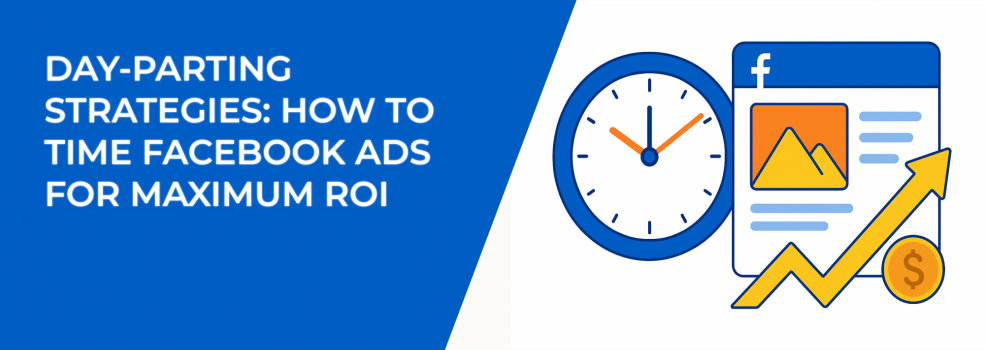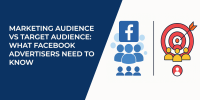Timing can make or break your Facebook ads. You can have strong creative, the right audience, and a solid budget, but if your ads show up when people aren’t ready to engage, performance will stall. This is where day-parting strategies — the practice of scheduling ads to run at specific hours and days — become essential for maximizing ROI.
But how do you know when to schedule? And what are the best ways to use day-parting without cutting out opportunities? Let’s dig into the details.
What Is Day-Parting in Facebook Ads?
Day-parting is a scheduling technique that allows advertisers to choose the exact hours and days their ads run. Instead of running ads around the clock, you set them to show only during high-performing time windows.
Think about it: if your ideal customers scroll Facebook during their lunch break or late in the evening, why waste money on early-morning impressions? Day-parting helps you align your ad spend with real user behavior.
If you’re still working out your targeting foundations, it might help to revisit strategies like Facebook Ads Targeting Updates: How To Adapt in 2025. Understanding who you reach is just as important as when you reach them.
Why Timing Matters for ROI
Facebook ads are auction-based, which means timing influences both cost and competition. Run ads at the wrong time, and you may be paying for impressions that never convert. On the other hand, precise timing can give you:
-
Higher click-through rates because people see ads when they’re most engaged
-
Lower costs per conversion since you cut waste from inactive hours
-
Stronger overall ROI because every dollar works harder
Each of these points adds up to more efficiency. When you spend in the right windows, you not only improve performance but also protect your budget from waste.
For businesses still asking themselves whether campaigns are worth the effort, check out Are Facebook Ads Worth It?. Timing is just one lever among many that determines profitability.
How to Find the Best Times to Run Facebook Ads
So, when should you run your ads? The answer lies in testing and analysis. Here’s how to start:
-
Dive into account insights
Look at historical performance in Ads Manager. Check which hours or days bring the most conversions, not just clicks. -
Break it down by audience segment
Different groups may behave differently. For example, young professionals may be more active at night, while parents might engage early in the morning. -
Test short bursts
Instead of spreading your budget evenly, try running ads in shorter windows across the week. Compare the results to see which times stand out. -
Watch external factors
Seasonality, holidays, and even the day of the week can change patterns. Monday mornings might behave differently than Friday nights.
These steps ensure that your schedule reflects real behavior rather than guesswork. Over time, your data will reveal the hours where conversions consistently outperform.
Practical Day-Parting Strategies
Once you’ve identified promising time slots, here’s how to put them into action. The following strategies can help you squeeze more value out of every dollar you spend.
-
Focus on prime hours only
If data shows conversions spike between 6 PM and 10 PM, shift your budget to those hours. This way, you avoid paying for impressions during dead periods like early mornings. -
Layer with audience targeting
Pair time-based delivery with precise targeting. For instance, if you’re running ads to a custom audience of email subscribers, show your ads at night when they’re more likely to check personal devices. -
Balance risk with always-on ads
While day-parting helps cut waste, leaving a small percentage of spend outside your core hours can catch unexpected conversions. Sometimes audiences behave unpredictably, and these “off-hours” can still deliver value. -
Adjust for time zones
If you advertise to a nationwide or global audience, remember that 9 AM in New York is 6 AM in California. Segment campaigns by region to match local routines. -
Experiment with weekdays vs. weekends
Some businesses thrive during the workweek, while others shine on weekends. For example, B2B software companies may see strong performance during office hours, while consumer lifestyle products might perform better on Saturdays and Sundays. -
Seasonal and event-based scheduling
Adjust schedules for specific events. A fashion retailer might increase spend in the evenings during holiday shopping season, while a sports brand could run ads leading up to game times.
The real value here comes from blending data with flexibility. A strict schedule without room for testing can close doors, while a balanced plan creates space for consistent performance and occasional surprises.
For more insight on setting up funnels that align with customer behavior, see Facebook Ads Funnel Strategy: From Audience Identification to Conversion.
Day-Parting Use Cases
To make these strategies concrete, let’s consider how different businesses might apply them:
-
E-commerce brand selling home décor
Data shows engagement spikes late at night, when customers are browsing casually from the couch. By shifting ad delivery to after 8 PM, the brand increases add-to-cart actions and lowers the cost per purchase. -
Local restaurant with delivery service
Orders peak around lunch and dinner hours. The restaurant limits ads to 11 AM–2 PM and 5 PM–9 PM. This not only reduces wasted impressions but also ensures the call-to-action — “Order now” — feels relevant in the moment. -
B2B SaaS company targeting professionals
Engagement is strongest between 9 AM and 5 PM, especially around mid-morning breaks. By running ads during work hours only, the company reaches decision-makers when they’re in business mode, not late at night when they’re checked out. -
Fitness subscription app
Sign-ups rise before and after typical gym hours. Ads run from 6–8 AM and 6–9 PM, matching when people are motivated to plan workouts. The app doubles conversions compared to running ads all day. -
Event ticketing platform
Data shows people buy tickets most often on Friday afternoons and Sunday evenings. Ads are scheduled heavily around those windows, building urgency and driving last-minute sales.
These examples highlight the power of timing across different industries. By adapting to audience routines, advertisers avoid waste and connect at moments when action feels natural.
Common Mistakes to Avoid
Even with good data, mistakes happen. Watch out for these pitfalls:
-
Cutting off too many hours and limiting reach too aggressively
-
Ignoring weekends, even though many audiences spend more time on Facebook then
-
Failing to re-test over time — what works this month may not hold up next quarter
Avoiding these errors is just as important as applying the right strategy. Overly narrow schedules or outdated assumptions can reduce reach and hurt campaign growth.
Final Thoughts
Day-parting is one of the most overlooked levers in Facebook advertising. When used carefully, it aligns ad spend with real customer behavior and helps reduce wasted impressions.
The key is balance. Test different time slots, monitor performance closely, and be willing to adjust as patterns change. The right schedule can give your campaigns a sharper edge and drive better results, all without raising your budget.
So, ask yourself — are you running ads when your audience is ready to take action?
For a deeper dive into scaling campaigns effectively, check out The Science of Scaling Facebook Ads Without Killing Performance.

